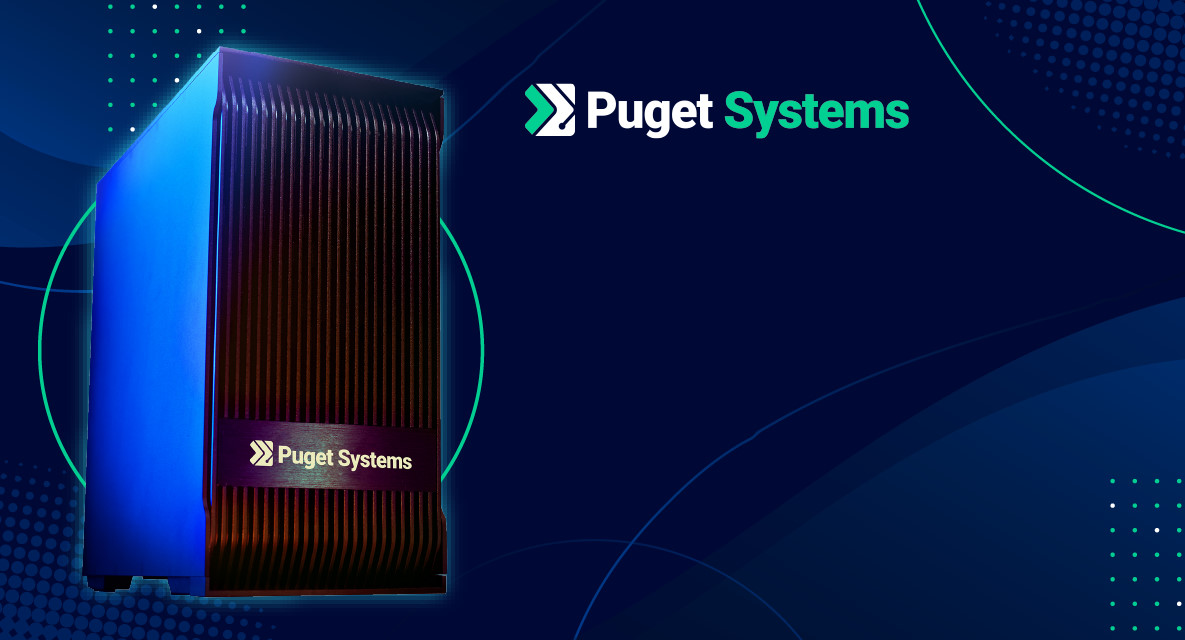
Hardware Recommendations for Lumion
Our advice on the best hardware and system configurations is drawn from Lumion’s website, articles, and additional research which our expert consultants have done over the years.
Lumion System Requirements
Quickly Jump To: Processor (CPU) • Video Card (GPU) • Memory (RAM) • Storage (Drives)
Lumion is a 3D visualization program which is compatible with most major CAD and 3D modeling applications. It is billed as a “rendering” tool, but differs from most traditional ray-tracing and path-tracing render engines in its approach to creating photo-realistic 3D images. In many ways, its behavior is more akin to 3D game engine – and like them, it primarily uses the video card in a computer to generate images, animations, and panoramas. This means it is also very fast, especially if the system running it is equipped with a powerful, modern GPU.
The folks who make Lumion maintain lists of minimum, recommended, and high-end system requirements on their website. Our advice below is drawn from there as well as other articles from Lumion and additional research which our expert consultants have done over the years.
Processor (CPU)
What is the best CPU for Lumion?
Lumion is a single-threaded program, so going with high clock speeds is going to be the focus here. As such, mainstream CPUs from Intel like the Core i7 and i9 or AMD’s Ryzen 7 are likely to be the best options. This overlaps nicely with what many engineering and architecture programs also need from a CPU, so a system built for Lumion will work well in most of those applications too.
Video Card (GPU)
What is the best type of video card (GPU) for Lumion?
The video card is the biggest factor for performance in Lumion! The more processing power your GPU has, the better for Lumion – so we generally recommend the best graphics card that you can reasonably afford. Lumion also recommends 16GB of VRAM for higher-end systems, so NVIDIA’s GeForce RTX 4080 16GB and 4090 24GB are top options. For those with smaller or less complex models, other GeForce RTX 40 Series cards may suffice.
Do I need a Quadro or “professional” video card for Lumion?
While Lumion has no need for a professional-grade video card in terms of feature set or certification, extremely complex projects may benefit from the higher amount of VRAM that top-end NVIDIA professional graphics cards offer. If the 24GB on a GeForce RTX 4090 is insufficient for your needs, consider the RTX 6000 Ada with 48GB.
Should I get multiple video cards for Lumion?
Lumion can only leverage a single graphics card, so multiple GPUs are unnecessary.
Memory (RAM)
How much memory (RAM) does Lumion need?
Lumion can use a fair amount of system memory, or RAM, when dealing with large and complex 3D models. Even though the rendering is done through the video card, the model itself has to be loaded into main memory first. On the high end, 64GB should usually be plenty – while smaller projects are likely to be fine with 32GB. If you tend to run a lot of other programs at the same time, consider doubling up on those numbers.
Storage (Drives)
What is the best type of drive to use for Lumion?
There aren’t particularly special demands for Lumion in terms of storage, but getting a fast solid-state drive (SSD) is always a good idea – especially for the OS, applications, and your working files. Some users like to split file storage onto a separate drive, and that can make sense if you have especially large or numerous projects.
NVMe drives are the fastest type of SSD, so a 1TB drive of that type is a good starting point for most users. If you want to split things up, then 500GB (or more) for the OS and software plus an additional SSD of whatever size you need for files will work well too.
What sort of drive is best for data storage and backup?
Since SSDs are still more expensive than platter drives per GB, for long-term storage and backup we recommend using a traditional hard drive or even an external drive array. Network attached storage systems are a great way to go for that, as they can be shared between multiple workstations and usually offer features to provide some level of data redundancy (protection against losing files if one of the drives dies).



